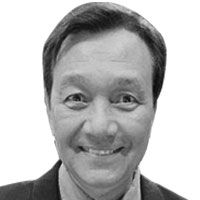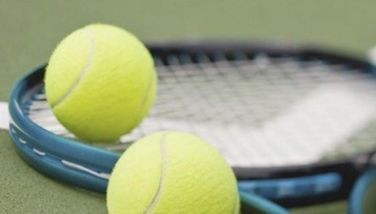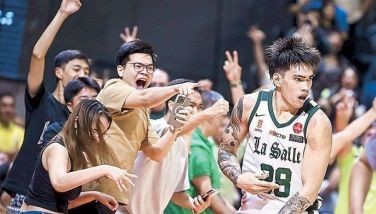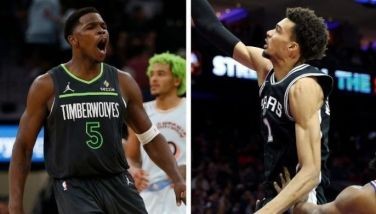Manny listed among greatest

There’s no doubt that inevitably, Manny Pacquiao will be named to the Boxing Hall of Fame where only three Filipinos Pancho Villa, Flash Elorde and promoter Lope (Papa) Sarreal, Sr. have so far been enshrined. No fighter in history has captured eight world titles in different divisions other than Pacquiao and that feat will likely go unmatched forever.
In a fitting tribute, writer Chris King included Pacquiao in an elite list of 14 fighters whom he called the greatest of the 20th century. King’s book is a 162-page, lavishly illustrated coffee table edition produced by Anness Publishing of England last year. The masterpiece explores the history of boxing from the 18th century and delves into the careers of the 14 greatest fighters who, in King’s words, “have enthralled successive generations with their skill and courage.”
The 14 greatest fighters are Jack Johnson, Jack Dempsey, Joe Louis, Sugar Ray Robinson, Rocky Marciano, Muhammad Ali, Roberto Duran, Larry Holmes, Marvelous Marvin Hagler, Sugar Ray Leonard, Mike Tyson, Roy Jones Jr., Oscar de la Hoya and Pacquiao. Just to mention Pacquiao’s name in the same breath as those of Dempsey, Robinson and Ali makes you proud to be Filipino. Pacquiao is the only Asian in the elite list. Not even Floyd Mayweather Jr. was included in King’s honor roll although he’s cited as leading the way in the 21st century.
Pacquiao’s section runs through eight pages with nine photographs and tracks how he became the ring icon that he is. Here are excerpts of the section:
“Southeast Asia has a long tradition of supplying great champions in boxing’s lighter weight categories. The most famous of these fighters include Khaosai Galaxy, the Thai Tyson who dominated the superflyweight division in the late 1980s and the great Filipino superfeatherweight Gabriel (Flash) Elorde. The first Asian boxer to truly become a world-wide superstar, however, was Elorde’s compatriot Manny Pacquiao.
“The idea that boxing provides a road out of poverty may be one of the great cliches of sport but an examination of the lives of many great champions shows that it is one rooted in truth. The story of Manny Pacquiao exemplifies this more than most. He was born on Dec. 17, 1978, in Bukidnon in the Philippines and brought up by his single mother. The family’s poverty meant that Pacquiao was denied an education and instead spent his early childhood working to support his family.
“During this time, he developed a love of boxing, asking Dizon Cordero, the father and trainer of a local fighter, to teach him the sport. Cordero took him in and guided him in his early amateur career. Pacquiao’s financial situation meant that he needed to fight for money as soon as possible. At age 14, he left for Manila where he found work in a factory, scraping the rust off lumps of recycled metal while searching for a gym that was prepared to take him in. His talent was soon spotted and on Jan. 22, 1995, he fought his first professional contest, a four-round bout against Edmund (Enting) Ignacio. Pacquiao was effectively still a boy – he had celebrated his 16th birthday one month beforehand but managed to outpoint his older opponent.”
The section on Pacquiao also takes a close look at his fight against De la Hoya. “Almost no one predicted the utter demolition that occurred on Dec. 6, 2008,” said King. “Fighting for the first time at welterweight, Pacquiao proved not only the quicker fighter as had been expected but the more powerful, too. For eight rounds, he hit De la Hoya almost at will, building up an insurmountable lead on the judges’ scorecards. The display was enough to force De la Hoya’s corner to throw in the towel. At the beginning of the ninth, the outclassed Mexican American got up from his stool and walked over to congratulate his opponent. The gesture seemed to signal the end of De la Hoya’s career as a serious force in world boxing and a passing of his mantle to the biggest attraction in the sport.”
King opened the door for Mayweather to preserve boxing’s popularity in the 21st century. “In the early years of the 21st century, a number of men had vied for the unofficial title of best pound-for-pound boxer in the world,” said King. “They included Roy Jones Jr., Bernard Hopkins and Sugar Shane Mosley. By 2006, however, the choice was between two men, both from boxing’s lighter weight divisions. The first was the tough and charismatic Filipino Manny Pacquiao. The other was Mayweather. Although he was one of the most skilled boxers of his generation, Mayweather became equally well-known for his chaotic family life, particularly his volatile relationship with his father and sometime trainer Floyd Sr.”
In the “Ultimate Book of Boxing Lists,” authors Bert Randolph Sugar and Teddy Atlas cited Pacquiao as one of the world’s 10 greatest southpaws along with Vicente Saldivar, Antonio Tarver, Lew Tendler, Marvin Johnson, Michael Moorer, Joe Calzaghe, Tiger Flowers, Pernell Whitaker and Hagler. The authors also named Pacquiao as the Fighter of the Decade for the first 10 years of the 21st century and one of the top 12 fighters with the fastest hands ever with Willie Joyce, Mayweather, Macho Camacho, Beau Jack, Ali, Roy Jones Jr., Willie Pep, Henry Armstrong, Robinson, Leonard and Floyd Patterson. Pacquiao was recognized as one of the greatest superbantamweights of all time with Erik Morales, Israel Vazquez, Daniel Zaragoza and Wilfredo Gomez.
While Pacquiao’s legacy as a fighter is cast in stone, he’s far from finished in his boxing career. He’s got Chris Algieri to take care of in Macau on Nov. 23 then next year, the talk is the Filipino will face Mayweather not once but twice in what could be the biggest grossing fight series ever.
- Latest
- Trending



























